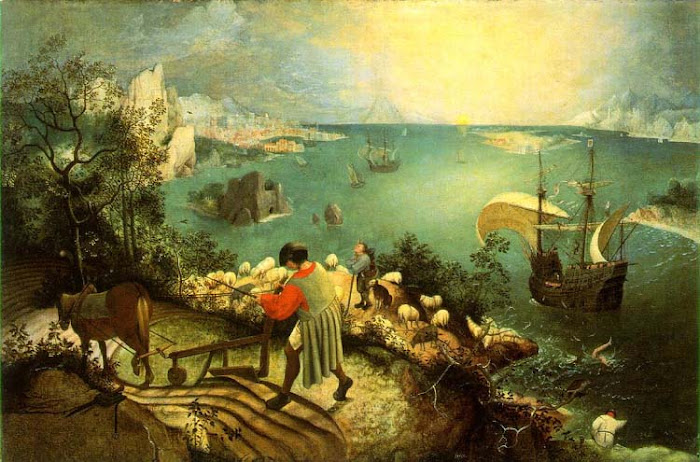
I just wanted to introduced my choices of authors from the research paper that I'm conducting. Still got 85% more to go.
Canadian short story writer and novelist, often characterized as a Canadian Chekhov, although her characters are not Chekhovian in the sense that they were passive and powerless to change their lives. Munro describes sensitively the lifestyles, customs, and values of ordinary people, often revealing in the process hidden meanings and personal tragedies. Although Munro's stories deal with the lives of women, her stance is not explicitly feminist. Munro has been mentioned as a contender for the Nobel Prize in Literature.
"This nun had smiled once in a while to show that her religion was supposed to make people happy, but most of the time she looked out at her audience as if she believed that other people were mainly in the world for her to boss around." (from Hateship, Friendship, Courtship, Loveship, Marriage, 2001)
Alice Munro was born Alice Laidlaw in Wingham, Ontario, where she grew up on a farm with her sister and brother. Before taking up farming, Munro's father, Robert Eric Laidlaw, had raised foxes and minks and worked as a watch-man. Anne Clarke Laidlaw, Munro's mother, had been a teacher. She suffered from Parkinson's disease and died in 1959.
Munro was expected to continue the farming business, but when she was 12, she decided to become a writer - "my oddity just shone out of me;" she once said. At the age of eighteen, Munro won a scholarship to the University of Western Ontario. In 1951 she married a fellow student, James Munro, and moved to Vancouver, British Columbia. In the early 1960s, the family moved to Victoria, where Munro founded with her husband a successful bookstore.
Munro's first story, 'The Dimensions of a Shadow', appeared in 1950, but it was no until 1968, that her first collection of short stories was published. "I never intended to be a short-story writer," Munro once said. The book, Dance of the Happy Shades, was awarded Canada's prestigious Governor General's Award. Several of the stories had earlier been published in periodicals and drew on Munro's own childhood experience. "The short story is alive and well in Canada," wrote Martin Levin in The New York Times (September 23, 1973), "where most of the 15 tales originate like a fresh winds from the North."
"The street is shaded, is some places, by maple trees whose roots have cracked and heaved the sidewalk and spread out like crocodiles into the bare yards. People are sitting out, men in shirt-sleeves and undershirts and women in aprons - not people we know but if anybody looks ready to nod and say, "Warm night," my father will nod and say something the same." (from 'Walker Brothers Cowboy', in Dance of the Happy Shades, 1968)
Munro's second book, Lives of Girls and Women (1971), was a cycle of interlocked stories about the childhood of a young woman, who wants to become a writer. Her portrait of the artist as a young girl gained international attention and was also made into a television movie, starring Munro's daughter Jenny.
Munro marriage broke down in 1972. She returned to southern Ontario, and married Gerald Fremlin, a geographer, whom she had known as a student. Something I’ve Been Meaning to Tell You from 1974 collected together pieces published in magazines such as the New Yorker, Viva and Redbook. The author was first unhappy with the book, and pulled it from the presses for restructuring. In Britain the work was published as a novel. Munro's third collection, however, contains some of her finest stories, including 'Wild Swans', 'Mischief' and 'Simon's Luck.' Also in Who Do You Think You Are? (1978), which followed the lives of two women, Rose and Flo, her stepmother, the tales were interlinked. Rose leaves the small town of Hanratty in Ontario, marries well, and becomes a successful television actress, but eventually she returns to take care of Flo, who has always been comfortable with her place in the world.
From the beginning, Munro has been true to her own literary style and voice. Generally her stories are set in small towns in southern Ontario and British Columbia. Her style has been described as beautifully transparent; it is unsentimental and detailed as in a photograph, much is left unsaid, but at the same time the undercurrents are oddly poignant and disturbing. The past is always present in the here and now. As a rule, Munro's characters are people we meet every day, but their choices are not obvious. Sometimes a small incident changes the course of their lives, gives it a new perspective, or provides a key piece to the story. "The complexity of things -- the things within things -- just seems to be endless," Munro has said. "I mean nothing is easy, nothing is simple."
Munro has received the Governor General's Award for Fiction three times. The short film adaptation of her story 'Boys and Girls' won an Oscar in 1984. Munro received in 1990 the Canada Council Molson Prize for lifetime contributions to her country's cultural life.
Selected works:
- Dance of the Happy Shades, 1968
- Lives of Girls and Women, 1971
- Something I’ve Been Meaning to Tell You, 1974
- Who Do You Think You Are?, 1978 (UK and US The Beggar Maid) - Kerjäläistyttö (suom. Kristiina Rikman)
- The Moons of Jupiter, 1982
- The Progress of Love, 1986 - Valkoinen tunkio (suom. Kristiina Rikman)
- Friend of My Youth, 1990
- Open Secrets, 1994 - Julkisia salaisuuksia (suom. Kristiina Rikman)
- Selected Stories, 1996
- The Love of a Good Woman, 1998
- Hateship, Friendship, Courtship, Loveship, Marriage, 2001 - Viha, ystävyys, rakkaus (suom. Kristiina Rikman)
- Vintage Munro, 2004
- Runaway, 2004 - Karkulainen (suom. Kristiina Rikman)
- The View from the Castle Rock, 2006 - Sanansaattaja (suom. Kristiina Rikman)


No comments:
Post a Comment